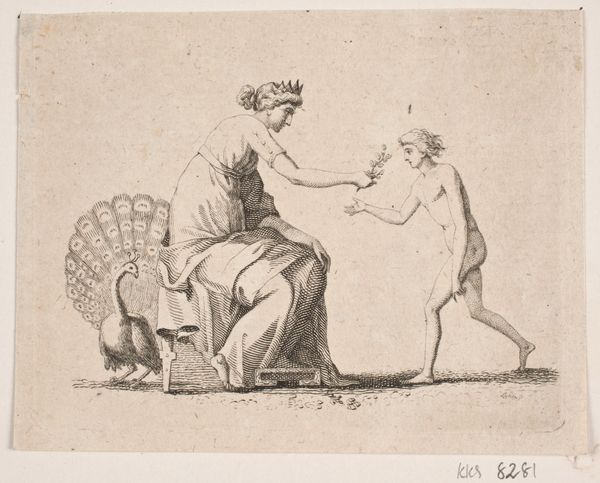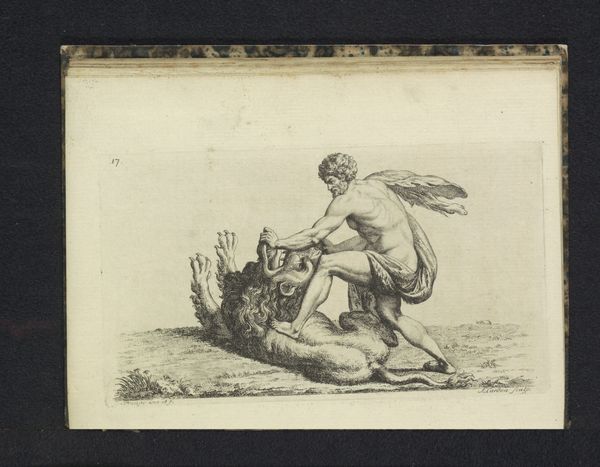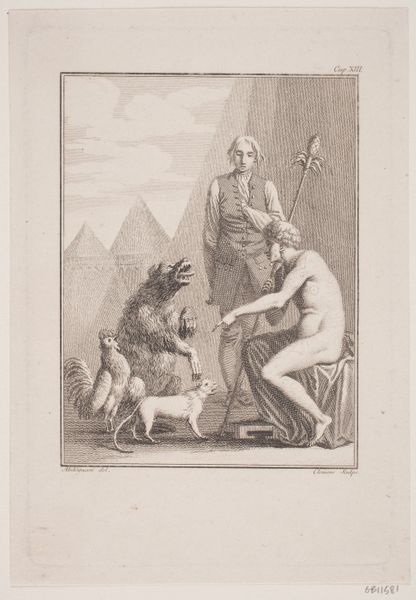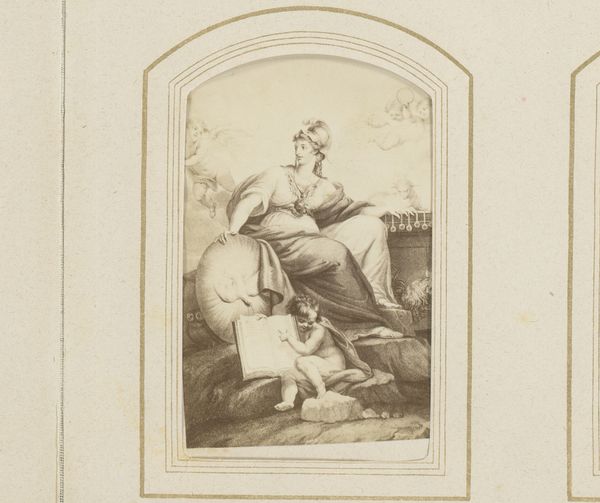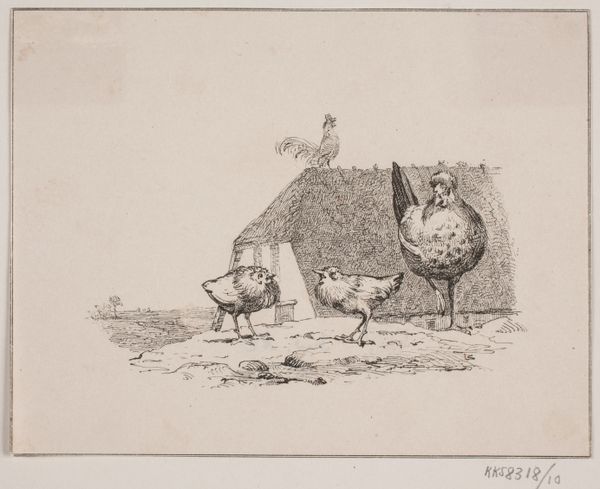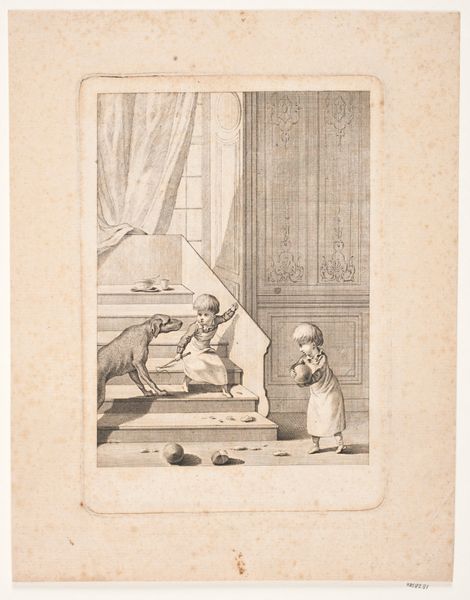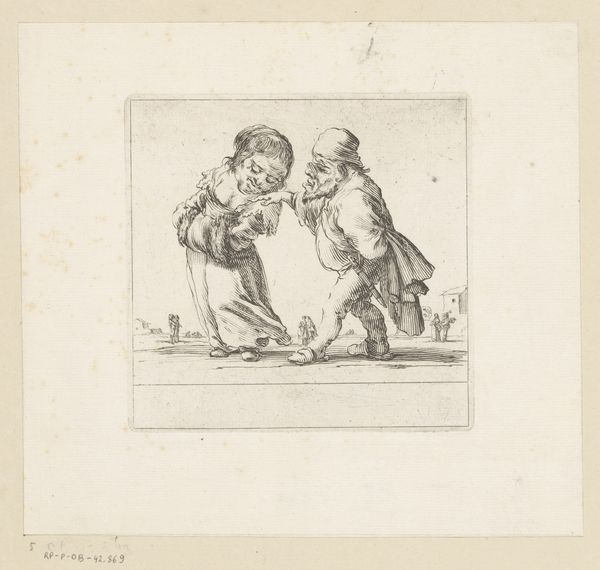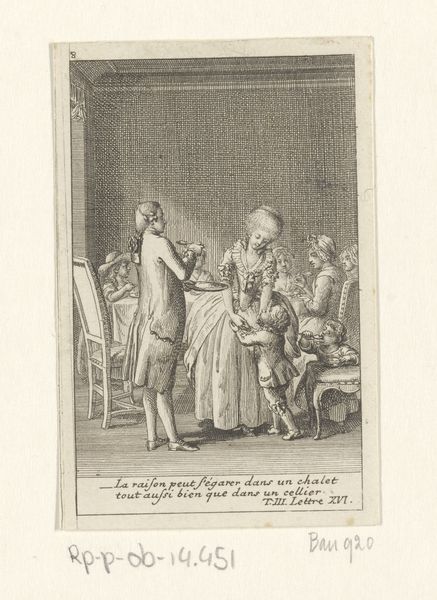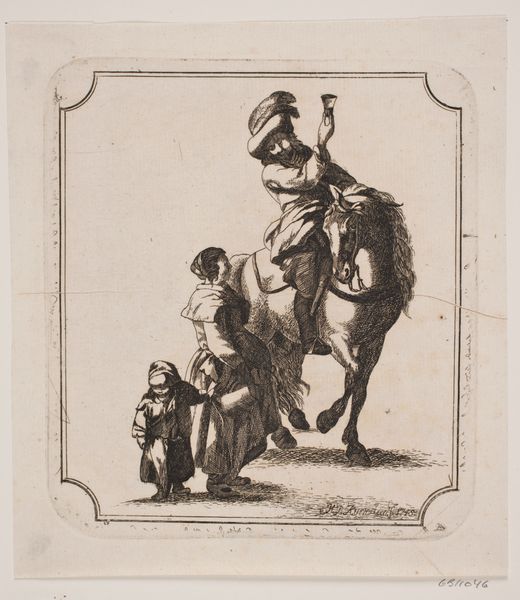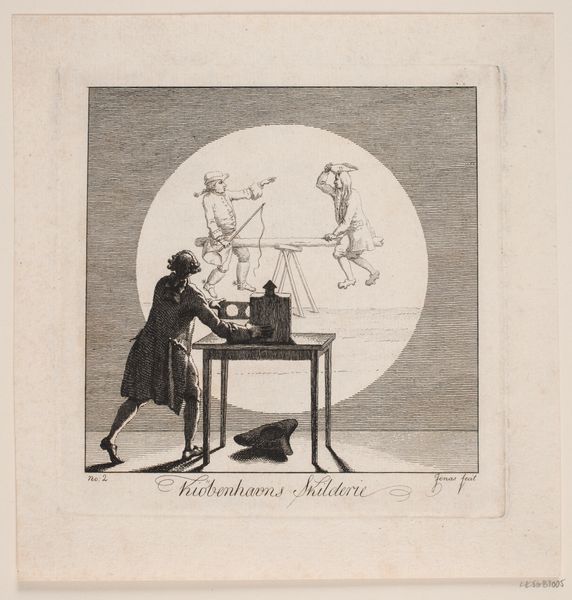
Allegori med Påfugl, siddende kvinde og en ung mand 1765 - 1833
0:00
0:00
Dimensions: 78 mm (height) x 98 mm (width) (plademaal)
Gerhard Ludvig Lahde made this allegorical etching with a seated woman, peacock, and young man. Classical imagery was often used to convey messages about virtue, beauty, and the good society. We need to remember that Lahde was a product of late 18th-century Denmark, a society undergoing significant social and political change during the Enlightenment. The image creates meaning through its use of classical allegory. The seated woman and the young man are idealized figures, reminiscent of ancient Greek or Roman art. The peacock, a symbol of beauty and pride, further reinforces this classical association. What could the giving of a laurel branch, symbolizing peace or victory, mean in this context? To truly understand this artwork, we can research the artist’s biography and the cultural and intellectual climate of the time. By studying the institutional history of art and the social conditions that shaped artistic production, we can gain a deeper appreciation for the role of art in society.
Comments
No comments
Be the first to comment and join the conversation on the ultimate creative platform.
